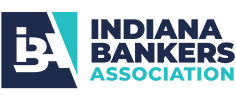You may think the subject of regulatory relief is not a popular one here at TCA. However, even a firm which specializes in providing solutions to manage regulatory compliance risk understands the importance of commonsense regulations, especially for community banks. We watch the legislative agenda carefully for indicators of change, but if I had a nickel for every time the subject of regulatory relief has been discussed I’d have a bag full of nickels. Unfortunately, up until now, the political climate has not been conducive to the passing of substantive relief. This, of course, is driven by some hesitation by lawmakers and regulators due to the 2007‐08 economic downturn and the recent scandals plaguing Wells Fargo. This time, however, there appears to be an appetite and momentum to get it done, as evidenced by the regulatory reform bills currently being crafted in the halls of Congress.
The Senate has introduced a bi‐partisan bill, Bill S. 2155, The Economic Growth, Regulatory Relief and Consumer Protection Act. Banking trade and advocacy groups are unanimous in their belief that the passage of this bill would spur economic growth by providing significant regulatory relief to community banks. There are some commonsense changes to several compliance rules/regulations, as well as a host of other non‐compliance provisions. The Bill has yet to be presented for a vote to the full Senate.
On January 18, 2018, the House of Representatives passed H.R. 2954, The Home Mortgage Disclosure Adjustment Act. This bill amends the Home Mortgage Disclosure Act of 1975 to specify which depository institutions are subject to the maintenance of records and disclosure requirements of the Act, specifically granting exemptions:
- With respect to closed‐end mortgage loans, if the depository institution originated fewer than 1,000 such loans in each of the two preceding years; and,
- With respect to open‐end lines of credit, if the depository institution originated less than 2,000 such lines of credit in each of the two preceding years.
In addition, the House bill lessens requirements for depository institutions to itemize and disclose specific mortgage data. Like the Senate bill, the House bill at this time has yet to be presented for a vote to the full Senate. The House is also working on its own bill to reform the Truth in Lending/RESPA Integrated Disclosure (TRID) requirements, which may be taken up for debate in the House soon.
Typically, we at TCA do not comment on proposed rules. However, we think there is a strong possibility that this legislation will pass in some form. Why? The Trump administration has signaled by words and actions that regulatory relief is a priority. This is quite possibly the best chance at regulatory relief that banks will see in a very long time.
What could derail relief?
How good are the chances that any of these bills will become law? Of course, Washington is, well, Washington and the bills in their current form would likely face some amendments – or worse, suffer the same fate as previous regulatory relief initiatives. The Senate bill has a 47% chance of passing, according to www.govtrack.us. H.R. 2954 passed 243‐184 and the likelihood of passage as of the date of this article is 38%, according to www.govtrack.us. Numbers aside, there is palpable momentum for these efforts. However, a familiar challenge may derail it all: The Congressional Calendar.
Conventional wisdom, based on mid‐term election year history, is that the Congressional Calendar will be shortened in 2018. As in other years, Congress is largely shut down during the month of August, with the Senate being the only body working for the first three days of the month. June, July and September will most likely be spent campaigning, as the entire House of Representatives campaigns for their jobs along with a third of the Senate. Let’s look at the current makeup of the congressional bodies and the current forecast for the elections:
| House of Representatives* | Currently | Competitive Races |
| Republicans | 239 | 40 |
| Democrats | 193 | 9 |
| Vacancies | 3 | — |
| Senate** | Currently | Current Races |
| Republicans | 51 | 8 |
| Democrats/Independents | 49 | 24 |
**Democrats/Independents – 51 seats needed to control the Senate.
Depending on the outcome of the election, we could be looking at one or both congressional entities in a lameduck period. Even though the Senate bill is a bi‐partisan effort, the loss of control by Republicans of either the Senate or the House will likely doom it.
That leaves us with a quite abbreviated Congressional Calendar of less than four months remaining in 2018. The current vitriol we are seeing from Washington has the potential to derail any bill, even bi‐partisan bills that make a lot of sense.
So, which way will it go? Perhaps the better question is: What we do to help the Bill succeed? We can start by contacting our Senators and asking them to support S. 2155 and to take up and pass this legislation as soon as possible. The clock is ticking on the Congressional Calendar. For your benefit, we have included a summary of all the key regulatory relief provisions of the proposed Senate Bill S. 2155 in the following pages.
Regardless of the size and shape of regulatory reform, remember that regulations—especially consumer regulatory compliance regulations—may be revised but they are not going away. Stay on the path . . . .Jim
Summary / Applicability of Key Regulatory Relief Provisions of Senate Bill S. 2155
All Banks – No Asset Restriction
- TRID Relief: Removes the three‐day waiting period now required under the TILA‐RESPA Mortgage disclosure rules when a creditor extends a second offer of credit with a lower APR.
- Appraisal Requirement Exemption: Creates an exemption for rural mortgage portfolio loans of less than $400k if the bank is unable to find a state certified/licensed appraiser to perform the appraisal in a timely manner.
- Reciprocal Deposits: Certain reciprocal deposits will not be considered brokered deposits.
- HMDA Exemption: Exemptions from collecting the new Dodd‐Frank Act data fields for banks that originate fewer than 500 closed‐end mortgage loans or fewer than 500 open‐end lines of credit.
Banks $3 Billion or Less
- Small Bank Holding Company (BHC) Policy – Federal Reserve: Raises the Federal Reserve’s Small BHC Policy Statement’s asset threshold from $1 billion to $3 billion.
- Examination Cycles: Well‐managed, well‐capitalized banks qualify for an 18‐month examination cycle, up from $1 billion.
Banks Under $5 Billion
- Short Form Call Report: Agencies required to reduce the reporting requirements for the first and third quarters for banks that met appropriate criteria.
Banks Under $10 Billion
- Qualified Mortgage Relief: Certain mortgage loans originated and retained in portfolio deemed to be qualified mortgages.
- Escrow Requirements Exemption: Exemption from TILA escrow requirement for banks that make 1000 or fewer first‐lien mortgages on principal dwellings.
- Capital Simplification: Agencies to establish a tangible equity leverage ratio between 8‐10 percent; banks exceeding the ratio meet risk‐based capital and leverage requirements and are “well‐capitalized.”
- Volcker Rule Exemption: Banks with total trading assets and liabilities not exceeding 5 percent of total assets exempt from the Volcker Rule.
Banks $10 Billion ‐ $50 Billion
- DFAST Eliminated: These institutions no longer subject to mandatory Dodd‐Frank Act stress testing.
- Risk Committees: These publicly held institutions no longer required to have a risk committee.
Banks $50 Billion to $100 Billion
- DFA Prudential Standards: On enactment date, these institutions will be exempt from the Dodd‐Frank enhanced prudential standards.
Banks $100 Billion to $250 Billion
- DFA Prudential Standards: Eighteen months after enactment date these institutions will be exempt from the Dodd‐Frank enhanced prudential standards, other than stress testing. However, the Fed will have discretionary authority to apply these standards to these banks.
Banks Over $250 Billion
- Treatment of Municipal Bonds in Liquidity Coverage Ratio: Agencies are directed to classify investmentgrade municipal bonds as level 2B liquid assets under the Liquidity Coverage Ration Rule.
Federal Savings Institutions
- Federal Savings Associations: Institutions with assets of $15 billion or less can elect to operate with national bank powers.
Mutual Holding Companies
- Mutual Holding Company Dividend Waiver: To waive dividends of subsidiaries, mutual holding company members must have voted to do so in the prior 24, t=rather than 12, months.
Other
- Credit Bureaus to provide consumers with one free freeze alert and one free unfreeze alert per year.
- Protections for certain bank employees who disclose the suspected exploitation of a senior citizen to a regulatory or law enforcement agency.
- Treasury to study/report on the risks of cyber threats to financial institutions and the U.S. capital markets.
- Certain medical debts incurred by veterans excluded from consumer reporting under the Fair Credit Reporting Act (FCRA).
- Loans secured by a 1‐4 family dwelling, that is not the primary residence of a member, is not a member business loan under the Federal Credit Union Act.
- Registered/licensed loan originators given temporary authority to act under SAFE Mortgage Licensing Act when changing employers.
- TILA amended to exclude an employee of a retailer of manufactured/modular homes who does not receive compensation from residential mortgage loan applications from the definition of a “mortgage originator.”
- Real property retrofit (PACE) loans subject to consumer protections.
- Treasury Department authorized to use loan guarantees and credit enhancements to remediate lead and asbestos hazards in residential properties.
- Appraisal services donated by fee appraisers as charitable contributions will be “customary and reasonable” under TILA (Habitat for Humanity).
- Parity for exemption from state regulation given to any securities listed on any “national securities exchange.”
- Certain funds are able to share the same name as their bank‐affiliated investment adviser.






